By Ciara Kernan, Jessica Ralston, and Hannah ter Hofstede
September 10, 2018
Bats in the Hubbard Brook ecosystem
Unlike birds, the other major aerial insectivores of northeastern forests, bats do not have a long history of being studied at Hubbard Brook. Their lifestyle—navigating forests at night, on the wing, steered by high frequency echolocation calls that are inaudible to humans—makes such study challenging, and means that we still have much to learn about fundamental aspects of bat biology and ecology even as we struggle to comprehend the massive population declines caused by White-Nose Syndrome (WNS) in recent years.
Although all eight bat species found in the northeastern U.S. are insectivores, there is evidence that different species preferentially forage for different types of insects in different habitats. Widespread species likely vary in their behavior across their geographic range, and what we know about preferred foraging habitat or roost sites from existing research may differ for the bats at Hubbard Brook. What’s more: the extensive knowledge of forest dynamics here provides critical information that can inform the design and interpretation of bat acoustic monitoring projects.
Big brown bat, Eptesicus fuscus
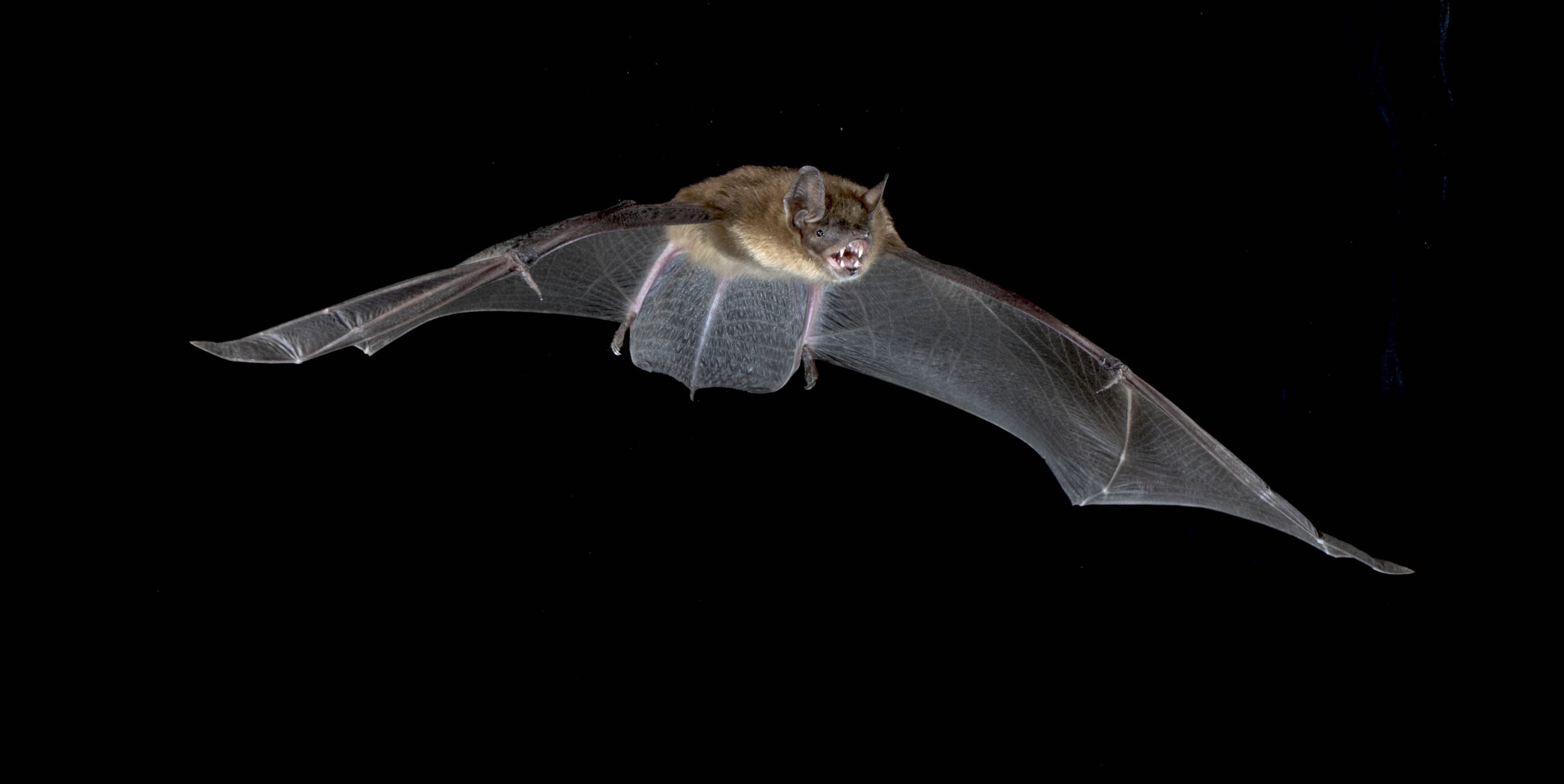
Often roosting in buildings, barns, and other manmade structures, these bats are probably the most frequently encountered species in New Hampshire. Other summer roosting sites include tree cavities and rock crevices. Big brown bats emerge early after sunset and forage in open spaces, especially near standing water and roads; they are particularly fond of beetles, but also eat moths and other small insects.
Call: Because their echolocation calls strongly overlap with silver-haired bats—both species show smooth sweeps with peak energy around 30 kHz—it can be difficult to distinguish the two. If the call starts above 65 kHz, however, it’s most likely a big brown.
Silver-haired bat, Lasionycteris noctivagans

Notable for their silver-tipped fur, these bats roost in small colonies hidden under cracks and hollows in tree bark. They are dependent on mature forest with lots of suitable roost trees, as they frequently switch roost sites during the summer. They forage in sheltered, covered habitat for moths and other insects. When they migrate, silver-haired bats appear to make short stopovers of a few days, rather than take extended rests.
Call: Echolocation calls are often similar to those of big brown bats, with peak energy around 30 kHz.
Little brown bat, Myotis lucifugus

One of the most common bats in the northeastern U.S. until the arrival of the White-Nose fungus, populations of this species have experienced precipitous declines—over 99% of individuals in some New Hampshire hibernacula. While all of the bat species listed here are susceptible to the fungus, little brown bats have been disproportionately affected by it. During the summer, survivors forage for small insects, often over water; preferred roost sites are tree cavities, caves, and human structures.
Calls: Myotis calls are distinctive at the genus level, with peak frequencies around 45 kHz and a short downward tail at the end of the call, but are difficult to pinpoint to species. Compared to Myotis leibii, M. lucifugus calls have a more distinct change in slope, but the two remain difficult to distinguish in most recordings.
Small-footed bat, Myotis leibii
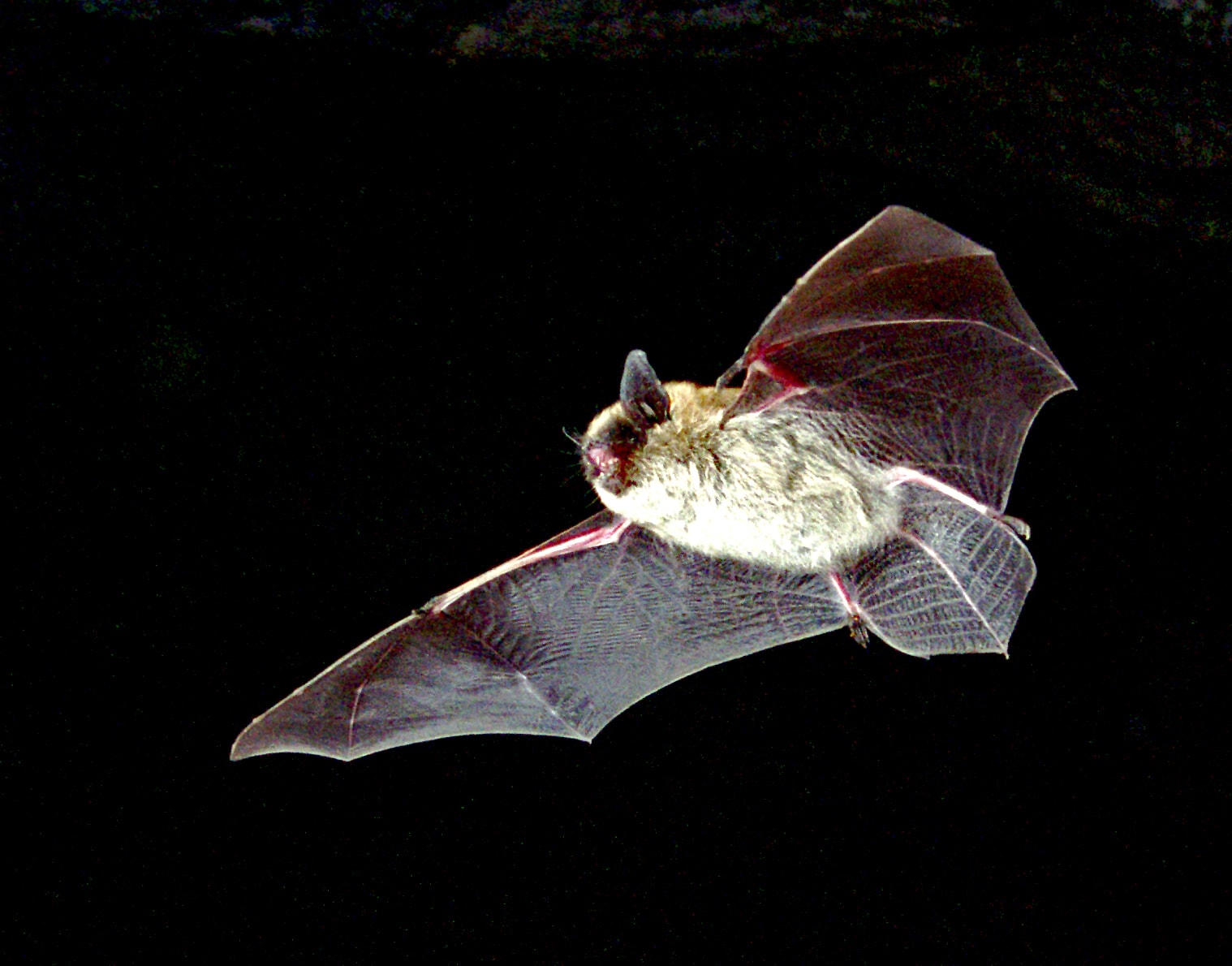
Rare and lesser-known than the other species, small-footed bats’ distinctive physical features include not only small feet but also a dark face mask. They are also affected by WNS, though along with big brown bats they show higher rates of baseline activity during hibernation which may reduce the impact of the fungus. Small-footed bats roost close to ground level on talus slopes or other rocky outcrops; they also forage relatively low for small, soft-bodied insects.
Calls: Myotis calls are distinctive at the genus level, with peak frequencies around 45 kHz and a short downward tail at the end of the call, but are difficult to pinpoint to species. M. leibii calls can sometimes be distinguished by the lack of a distinct change in slope on the spectrogram.
Tricolored bat, Perimyotis subflavus
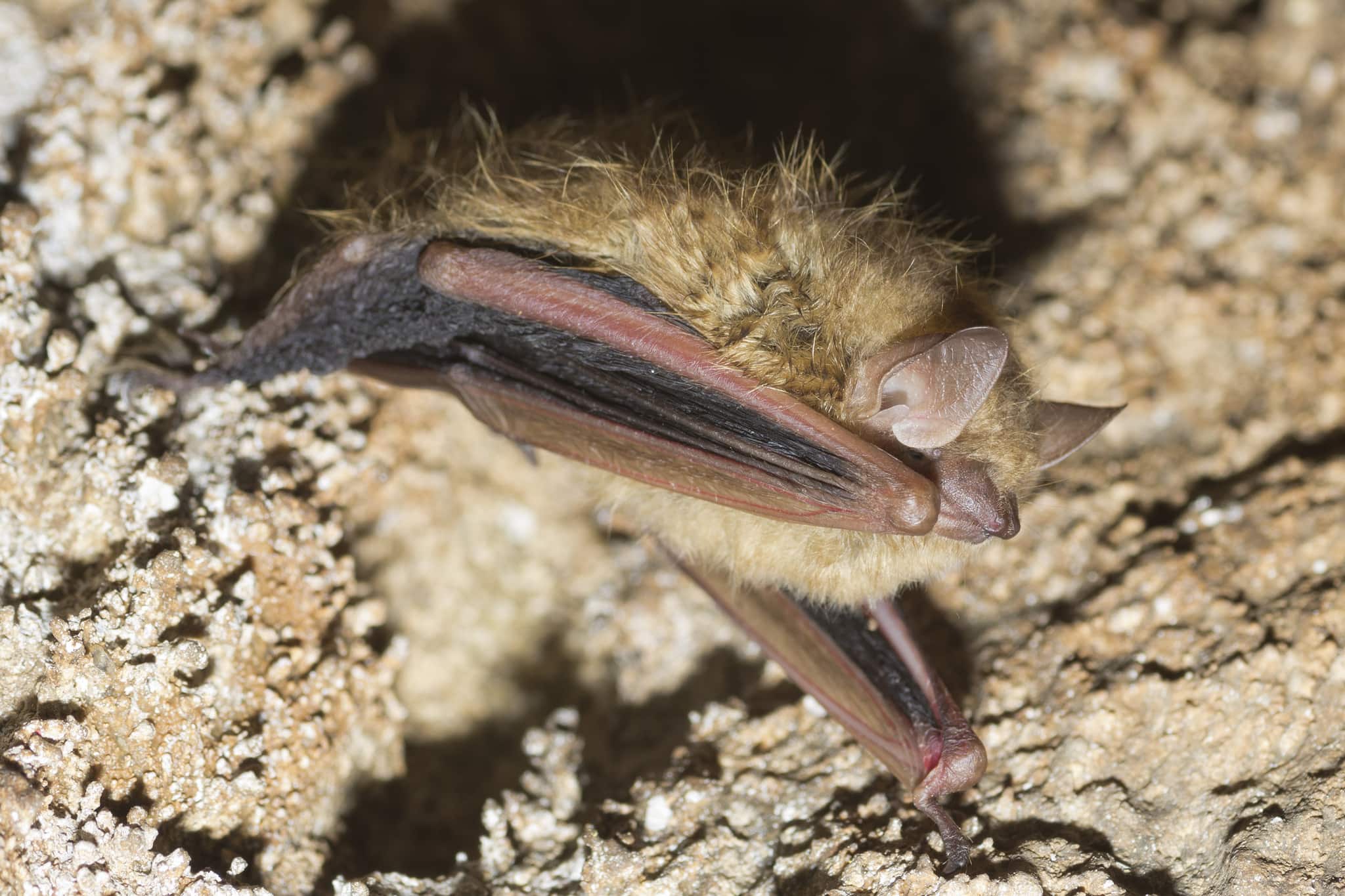
Recently reclassified from the genus Pipistrellus, tricolored bats are named for the banding on their fur, which is black at the base but graduates to yellow and then brown at the tips. They roost in clusters of dead leaves, as well as tree cavities, caves, and buildings. They emerge early from these roosts and forage continuously, often in forest edge habitat near water.
Calls: The echolocation calls of P. subflavus are distinctive: they are reliably above 40 kHz and have a sharp angle with no downward tail sweep on the spectrogram.
Northern long-eared bat, Myotis septentrionalis
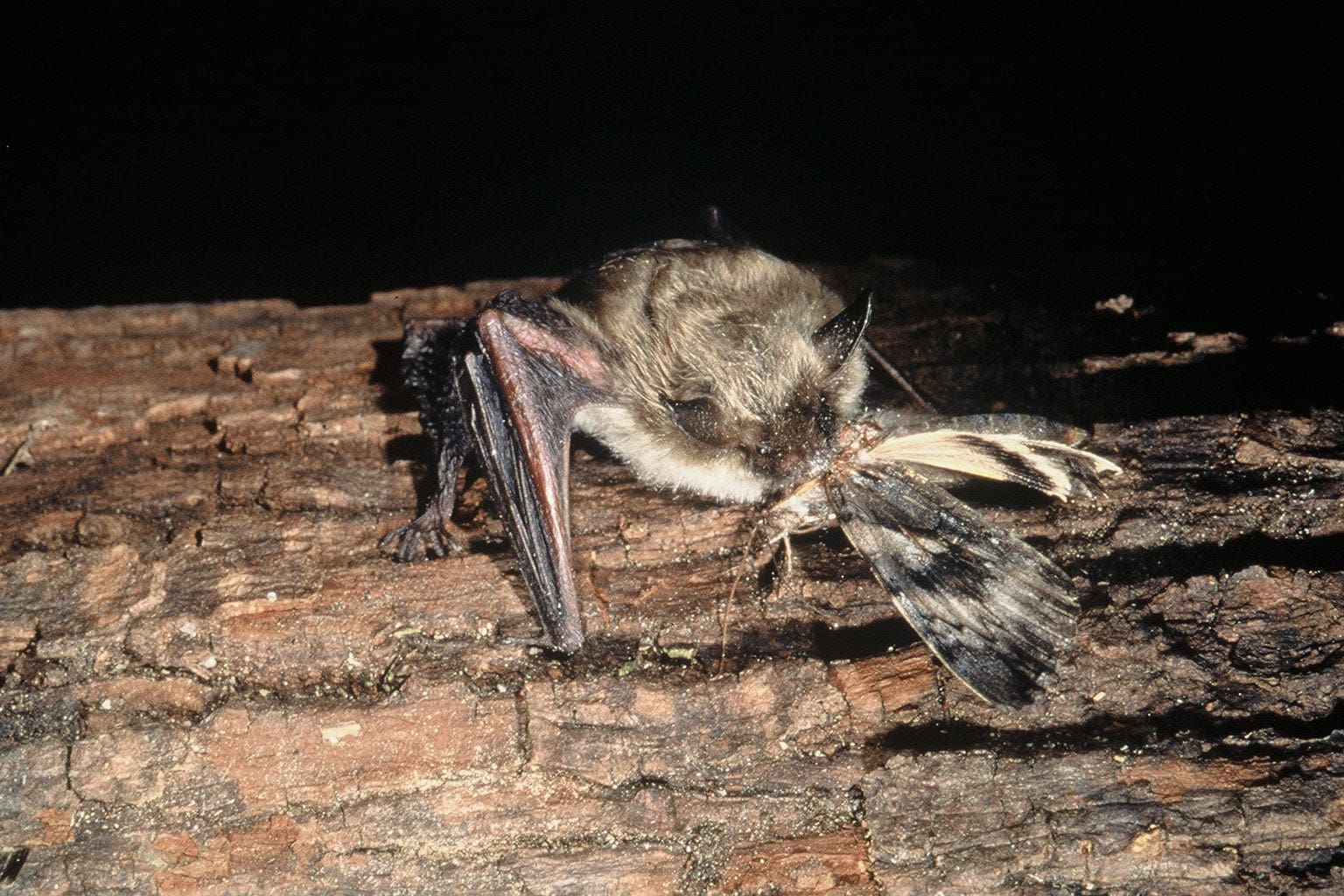
With noticeably longer ears than other Myotis species, these bats prefer roosting under bark or in tree cavities and are rarely found in human structures. Unlike most other Northeast bat species, they tend to glean prey (especially moths) off of surfaces rather than catching it in midair. Moths are not able to hear the calls of northern long-eared bats very well, giving the bats an advantage in their gleaning attacks.
Calls: M. septentrionalis calls are similar in frequency range to other Myotis species, but are much shorter in duration (on average 2.1 ms, compared to 3.8 ms for M. lucifugus).
Eastern red bat, Lasiurus borealis
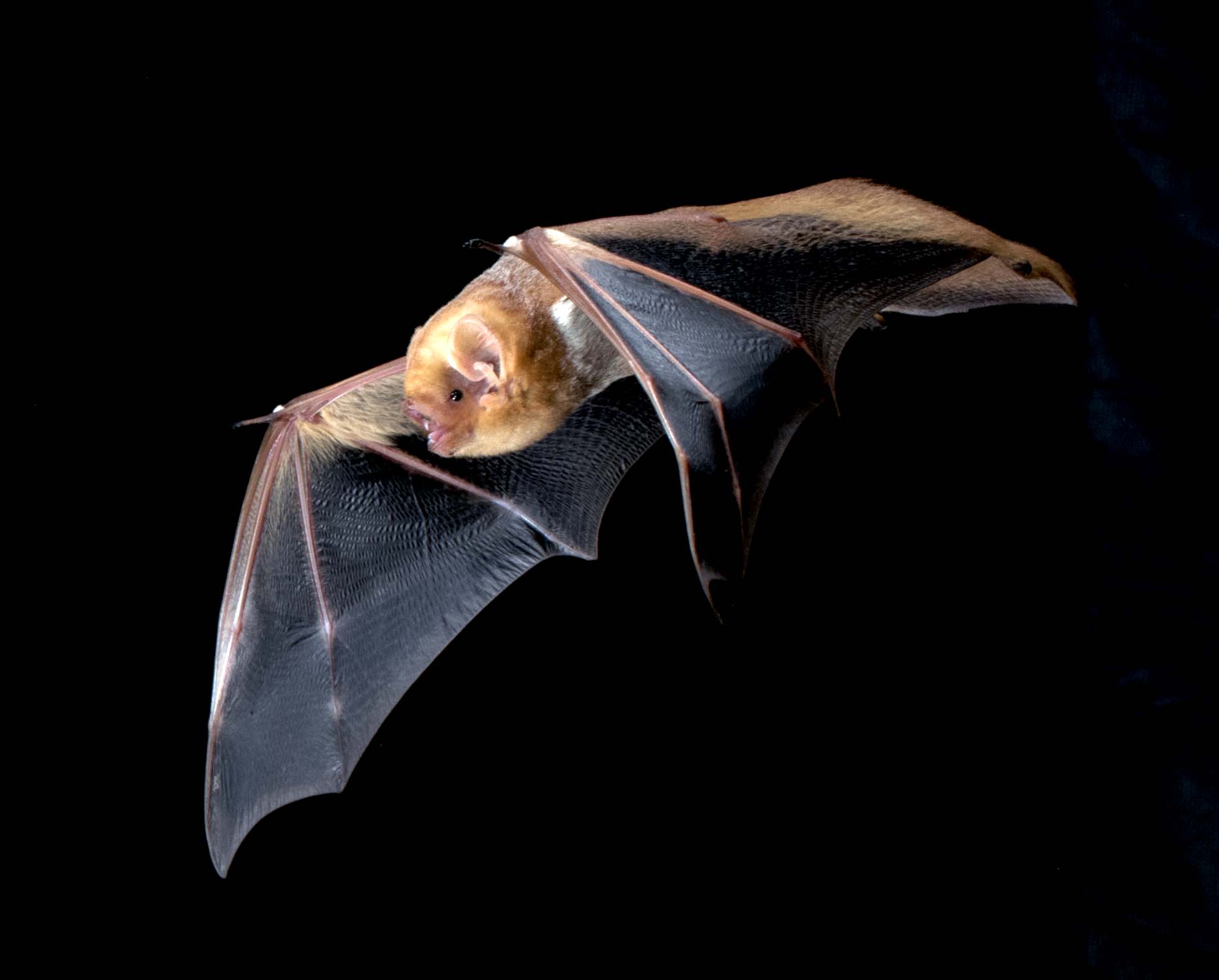
Largely solitary, these bats roost in tree foliage. They have bright red-orange fur, with a furred tail membrane. Females tend to have large brood sizes—up to five pups, though more commonly three or four. Eastern red bats will migrate to warmer climes in the winter, though as with other migratory bats their migration patterns are not well understood.
Calls: A spectrogram with a smooth curve from 60 to 35 kHz is typical, though other forms (flatter frequency range or shorter calls with a more dramatic frequency sweep) are also observed.
Hoary bat, Lasiurus cinereus
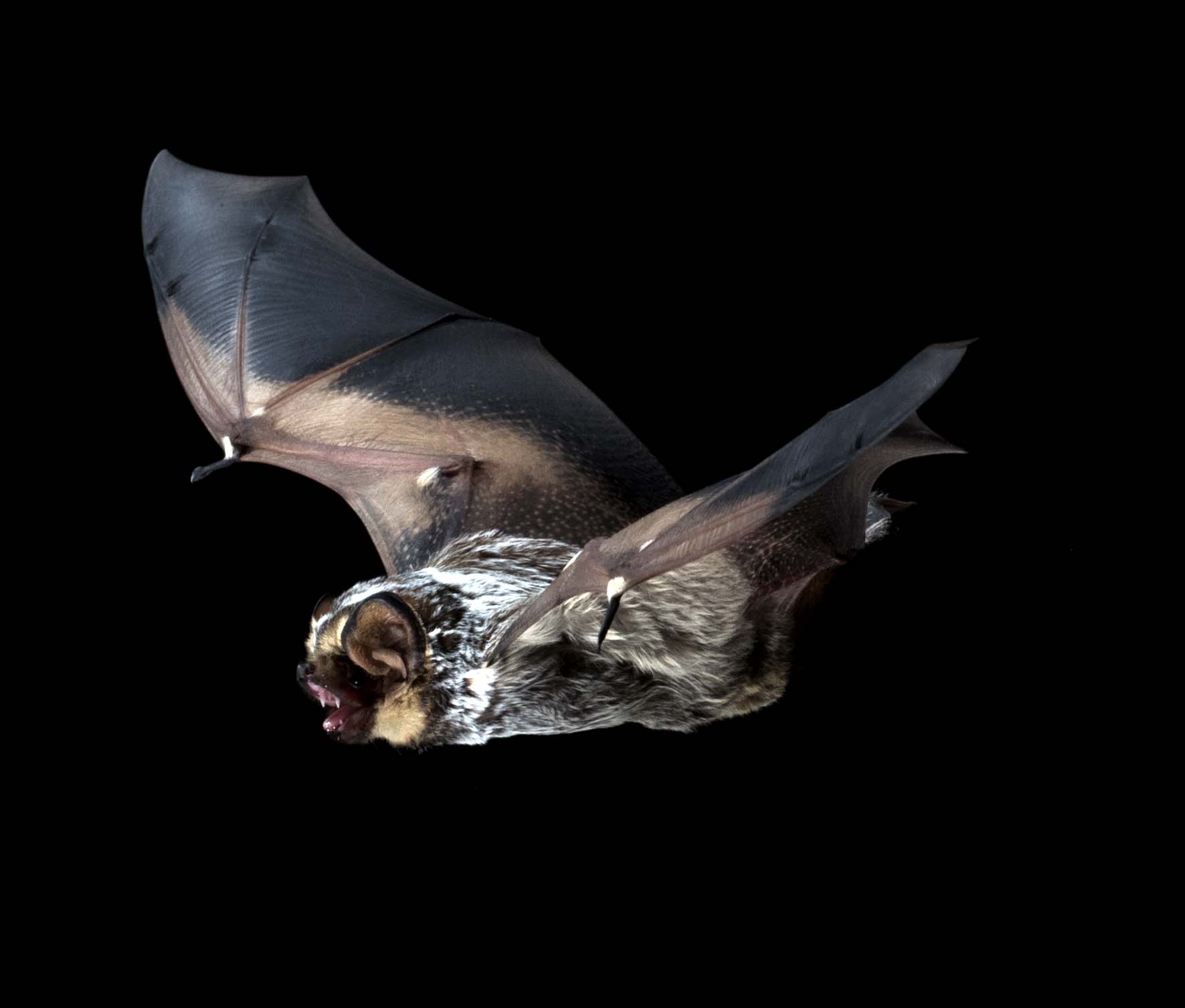
The silvery “hoarfrost” fur of these bats helps camouflage them against the tree bark they hang off when roosting. Hoary bats are a very widespread species, with subspecies occurring in both South America and Hawaii. The North American subspecies, L. cinereus cinereus, is migratory, overwintering in Central America. The bats’ migration patterns, as well as their habit of foraging high up and in open spaces, may make them more susceptible to being killed by wind turbines than bats of other species.
Calls: With a long duration and narrow bandwidth, the echolocation calls of L. cinereus are usually easy to identify.
References:
Agosta, S. J. 2002. Habitat use, diet and roost selection by the Big Brown Bat (Eptesicus fuscus) in North America: a case for conserving an abundant species. Mammal Review 32:179–198.
Baerwald, E. F., W. P. Patterson, and R. M. R. Barclay. 2014. Origins and migratory patterns of bats killed by wind turbines in southern Alberta: evidence from stable isotopes. Ecosphere 5:art118.
Brooks, R. T. 2011. Declines in summer bat activity in central New England 4 years following the initial detection of white-nose syndrome. Biodiversity and Conservation 20:2537–2541.
Department of Fish and Game. (n.d.). White-nose Syndrome | New Hampshire Fish and Game Department. https://wildlife.state.nh.us/nongame/white-nose-syndrome.html.
Faure, P. A., J. H. Fullard, and J. W. Dawson. 1993. The gleaning attacks of the northern long-eared bat, Myotis septentrionalis, are relatively inaudible to moths. Journal of Experimental Biology 178:173–189.
Furlonger, C. L., H. J. Dewar, and M. B. Fenton. 1987. Habitat use by foraging insectivorous bats. Canadian Journal of Zoology 65:284–288.
McGuire, L. P., C. G. Guglielmo, S. A. Mackenzie, and P. D. Taylor. 2012. Migratory stopover in the long-distance migrant silver-haired bat, Lasionycteris noctivagans. Journal of Animal Ecology 81:377–385.
Moosman, P. R., J. P. Veilleux, G. W. Pelton, and H. H. Thomas. 2013. Changes in Capture Rates in a Community of Bats in New Hampshire during the Progression of White-Nose Syndrome. Northeastern Naturalist 20:552–558.
Reynolds, D. S., K. Shoemaker, S. von Oettingen, and S. Najjar. 2017. High Rates of Winter Activity and Arousals in Two New England Bat Species: Implications for a Reduced White-Nose Syndrome Impact? Northeastern Naturalist 24:B188–B208.
Thorne, T. 2017. Bats of Ontario. First edition. Hawk Owl Publishing.
